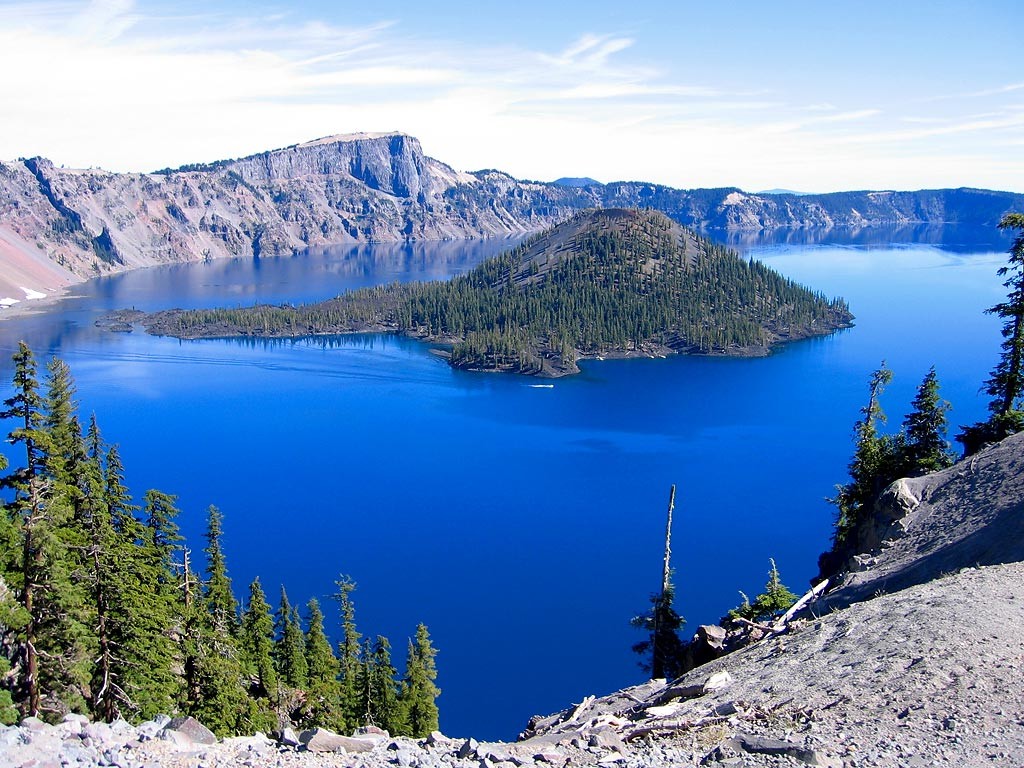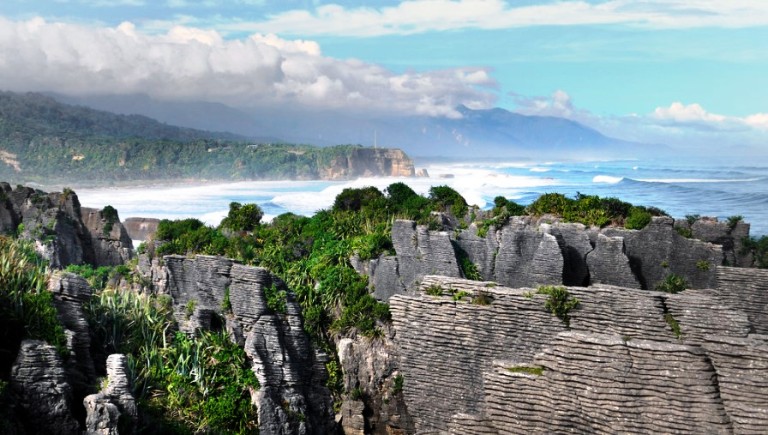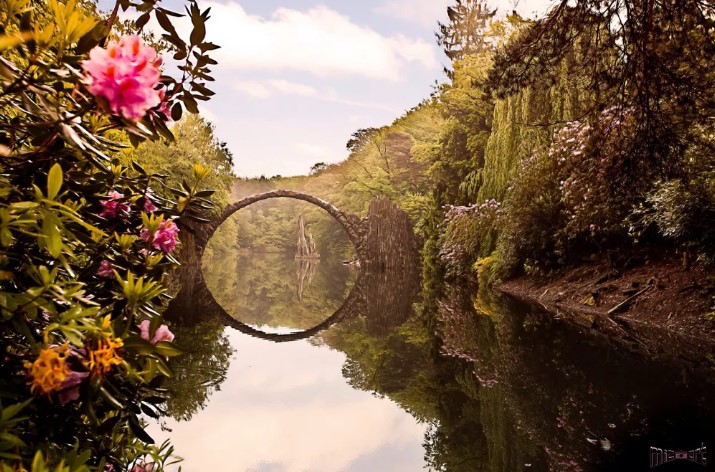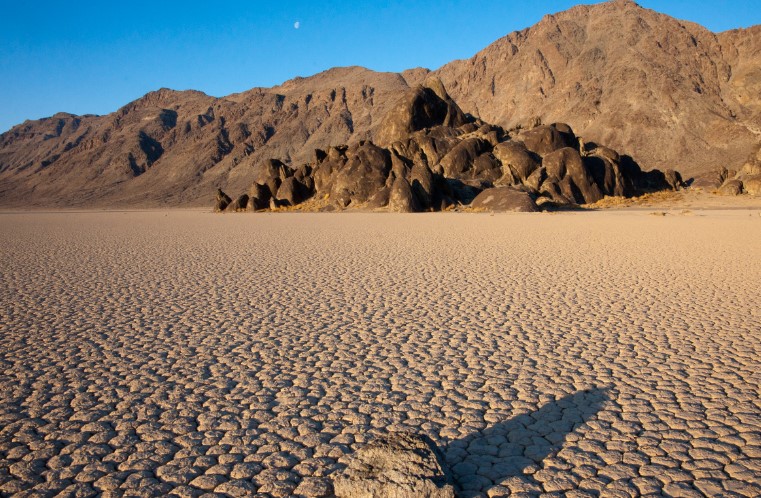Crater Lake, known as “Old Man of the Lake,” is a caldera lake located in south-central Oregon in the western United States. Crater Lake is famous due to its deep blue color and water clarity. This is the deepest lake in the United States and 7th in the world, with a depth of around 1943 feet, depending on the average or maximum depth measured.
The lake partly fills an approximately 2,148-foot-deep caldera that was formed about 7,700 years ago by the collapse of the volcano Mount Mazama. Moreover, there’re no rivers flowing into or out of the lake; the evaporation is compensated for by rain and snowfall at a rate such that the total amount of water is replaced every 250 years.
In 1902, Crater Lake and its surrounding 180,000 acres were to be “dedicated and set apart forever as a public park or pleasure ground for the benefit and enjoyment of the people of the United States. Crater Lake is a full-sized tree that is now a stump that has been bobbing vertically in the lake for more than a century.
Hence, the low water temperature has slowed down the decomposition of the wood, henceforth extending the longevity of the bobbing tree. Further, two islands are in Crater Lake, named Wizard Island, formed from a cinder cone that erupted after Crater Lake started to fill with water, and the other smaller, Phantom Ship, which has seven distinctive trees living on it.
There are also colonies of violet-green swallows and numerous varieties of wildflowers and lichens living there. The lake was rich with a variety of fish between 1888 and 1941, whereas it had no indigenous fish population. Therefore, many species have formed self-sustaining populations.
In June 1853, the explorer John Wesley Hillman named the lake “Deep Blue Lake,” but it was thrice changed to Blue Lake, Lake Majesty, and eventually Crater Lake. The Crater Lake is five to six miles across, with a caldera rim ranging in elevation from about 7,000 to 8,000 feet, with an average depth of 1,148 feet, while the maximum measured depth is 1,949 feet.
Moreover, the caldera was created in a huge volcanic eruption somewhere between 6,000 and 8,000 years ago that led to the subsidence of Mount Mazama. The lava eruptions created a central platform, Wizard Island, Merriam Cone, and other, smaller volcanic features, including a rhyodacite dome that was ultimately formed atop the central platform.
Finally, the caldera cooled, letting rain and snow accumulate and sooner or later form a lake. Some hydrothermal activity remains along the lake floor, suggesting that at some point in the future, Mazama may erupt once again. Crater Lake has a sub-alpine climate, in the summer, the weather is mild and dry, but in the winter, it is extremely cold, and massive snowfalls average 488 inches per year and do not usually melt until mid-July.
Perhaps the most unique feature of the lake is the remarkable ochre and rust hues of the surrounding rock walls. Animal life inhabiting the area—nearly all of which is protected wilderness—includes deer, bears, eagles, hawks, owls, and grouse, and, particularly in summer, there is an abundance of songbirds and insectivorous birds. Crater Lake contains plant life predominantly pine and fir trees, with wildflowers covering the meadows in summer.
This area has no pollution, which caused the lake to have no inlets or tributaries; the water of the lake is the purest in the world. In 1997, the scientists recorded clarity up to 175 feet, as compared to normal clarity falls of 80 to 115 feet. The lake is extremely clear for any natural body of water but has relatively high levels of dissolved salts, total alkalinity, and conductivity.
The Native American tribe Klamath regarded the lake as a sacred site and witnessed the collapse of Mount Mazama actually creating Crater Lake. The Klamath natives used Crater Lake in vision quests, which often involved climbing the caldera walls and other risky tasks. Hence, those who were successful in such quests were often regarded as having more spiritual powers. The tribe still holds Crater Lake in high regard as a spiritual site.
Also, there is “Old Man of the Lake,” a hemlock log that has been floating upright in the lake for more than 100 years. The wind currents enable the Old Man to travel to different locations around the lake. Further, a lot of activities you can do at Crater Lake of Oregon, like day hikes, fishing, and Scuba diving, are most popular here. The Lake is a spectacular mountain lake widely renowned for its great depth and beauty, although the Klamath Indians regarded the lake with much respect, awe, and fear.

















